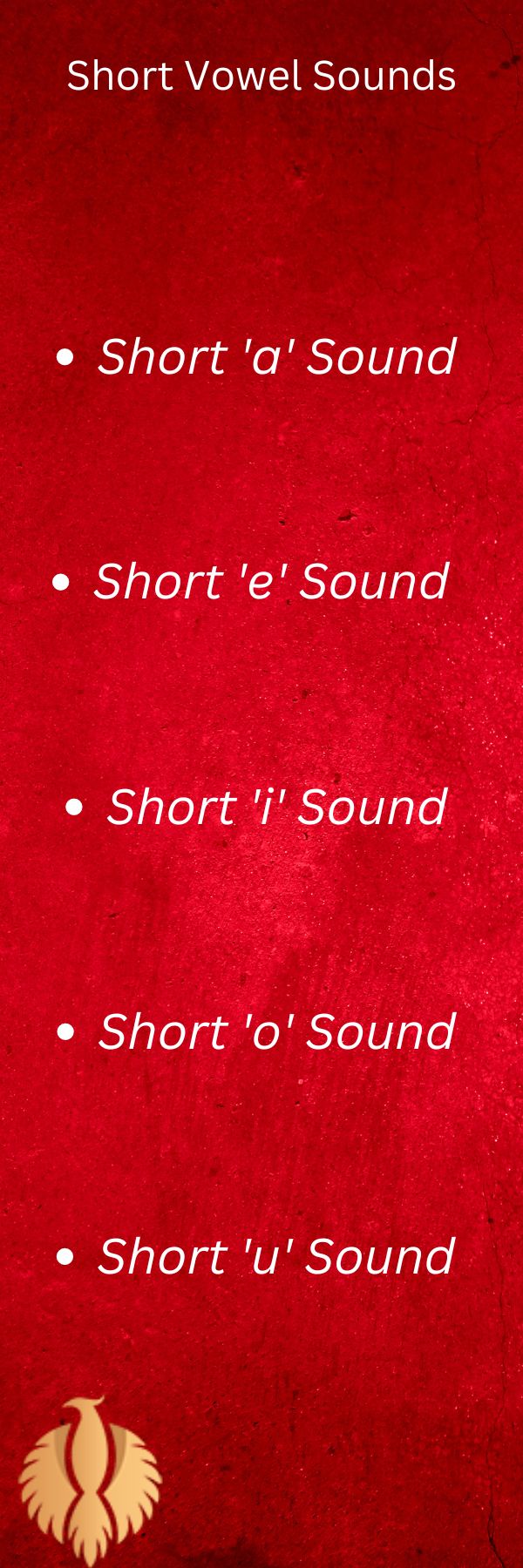Understanding vowel sounds is fundamental to mastering any language, particularly English. Vowels are the heart of words, and their sounds can drastically change the meaning of words.
In English, vowels can produce both long and short sounds, each contributing to the phonetic diversity of the language. Long vowels are pronounced the same way as the letter name itself, such as the “a” in “cake,” which sounds like the letter “A.”
These sounds are typically held longer and often occur in open syllables or when followed by a silent “e” (e.g., “make,” “bike”). Long vowels can also appear in vowel digraphs, where two vowels work together to produce a single sound, such as “ea” in “team” or “oa” in “boat.”
Short vowels, on the other hand, have a different pronunciation and are usually found in closed syllables, where a vowel is followed by one or more consonants.
For instance, the short “a” in “cat” is pronounced differently from the long “a” in “cake.” Short vowels are typically quicker and do not sound like the letter name. Examples include “e” in “bed,” “i” in “sit,” “o” in “dog,” and “u” in “cup.”
In this comprehensive guide, I will explore the complete list of long and short vowel sounds, providing unique examples to illustrate their usage.
You might also enjoy: No Earlier Than – All You Need To Know [Meaning + Examples]
Short Vowel Sounds

Short vowel sounds occur when the vowel is pronounced in a short form. They often appear in closed syllables, where a single vowel is followed by one or more consonants. Here is a breakdown of each short vowel sound with examples:
Short ‘a’ Sound
The short ‘a’ sound is pronounced as /æ/ (as in “cat”).
Examples:
- Anna: Anna has a cat named Pat. ⬛
- Sam: Sam packed his bag for the trip.
- Max: Max sat on the mat during storytime.
Short ‘e’ Sound
The short ‘e’ sound is pronounced as /ɛ/ (as in “bed”).
Examples:
- Betty: Betty fed the pet rabbits in the shed.
- Ted: Ted met his friend Ed at the park.
- Jen: Jen read a red book on the bench.
Short ‘i’ Sound
The short ‘i’ sound is pronounced as /ɪ/ (as in “sit”).
Examples:
- Liz: Liz fixed the lid of the jar.
- Tim: Tim is a big fan of his little sister.
- Nick: Nick picked the thickest stick in the pile.
Short ‘o’ Sound
The short ‘o’ sound is pronounced as /ɒ/ or /ɑ/ (as in “dog”).
Examples:
- Tom: Tom jogs around the block every morning. ♂️
- Molly: Molly lost her top hat.
- Rob: Rob hopped on the log by the pond.
Short ‘u’ Sound
The short ‘u’ sound is pronounced as /ʌ/ (as in “cup”).
Examples:
- Bub: Bub jumped into the tub.
- Gus: Gus loves to run in the sun.
- Russ: Russ cut the rug into small pieces.
Long Vowel Sounds
Long vowel sounds are pronounced the same as the name of the vowel itself. They usually occur when a vowel is followed by a silent ‘e’ or when vowels appear in specific combinations. Here is a detailed look at each long vowel sound with examples:
Long ‘a’ Sound
The long ‘a’ sound is pronounced as /eɪ/ (as in “cake”).
Examples:
- Kate: Kate baked a cake for Nate.
- Jane: Jane came to play the game.
- Dave: Dave gave a brave wave.
Long ‘e’ Sound
The long ‘e’ sound is pronounced as /iː/ (as in “see”).
Examples:
- Eve: Eve received a piece of cheese.
- Steve: Steve believes in fairies.
- Lee: Lee agreed to meet by the sea.
Long ‘i’ Sound
The long ‘i’ sound is pronounced as /aɪ/ (as in “bike”).
Examples:
- Mike: Mike likes to ride his bike.
- Ivy: Ivy finds the sky quite high.
- Riley: Riley might fly a kite tonight.
Long ‘o’ Sound
The long ‘o’ sound is pronounced as /oʊ/ (as in “note”).
Examples:
- Joe: Joe wrote a note on the boat. ️
- Chloe: Chloe hopes to go to the show.
- Romeo: Romeo strolled by the oak tree.
Long ‘u’ Sound
The long ‘u’ sound is pronounced as /juː/ or /uː/ (as in “mule” or “flute”).
Examples:
- June: June used the blue glue.
- Luke: Luke played a tune on the flute.
- Sue: Sue knew the truth about the new clue. ️
Vowel Digraphs and Diphthongs

Vowel digraphs and diphthongs are combinations of vowels that create unique sounds. These combinations can often be confusing, so understanding them is crucial for correct pronunciation.
Vowel Digraphs
Vowel digraphs consist of two vowels that make a single sound.
‘ai’ and ‘ay’ Sounds
Examples:
- Maid: The maid stayed late to clean.
- Ray: Ray is playing in the bay.
- Paige: Paige waited for the rain to stop. ☔️
‘ea’ and ‘ee’ Sounds
Examples:
- Bean: Dean ate a green bean.
- Meet: Pete will meet by the street.
- Leah: Leah feels the heat in the seat.
‘oa’ and ‘oe’ Sounds
Examples:
- Boat: The goat on the boat can float.
- Toe: Joe stubbed his toe.
- Roan: Roan has a coat that is a new loan.
Diphthongs

Diphthongs are complex sounds formed by gliding from one vowel sound to another within the same syllable.
‘oi’ and ‘oy’ Sounds
Examples:
- Boil: The oil will boil soon.
- Toy: Roy enjoys his new toy.
- Lloyd: Lloyd is annoyed by the noise.
‘ou’ and ‘ow’ Sounds
Examples:
- House: The mouse found a house.
- Cow: The cow is now in the meadow.
- Brow: How did the brow become low?
Schwa Sound
The schwa sound is an unstressed and neutral vowel sound found in many English words. It is often represented by the phonetic symbol /ə/.
Examples:
- Anna: Anna took a banana from the basket.
- Sofa: The sofa is very comfortable.
- Pilot: The pilot had a smooth flight. ✈️
Examples with Context
To solidify the understanding of these vowel sounds, here are some examples with context:
Short Vowel Context
- Anna and the Cat: Anna has a cat named Pat. Every morning, Pat sits on the mat and waits for Anna to feed him.
- Betty’s Shed: Betty loves her pet rabbits. She often feeds them in the shed, where they munch happily on their greens.
- Tim’s Fix: Tim is known for fixing things around the house. His latest project was repairing the lid of an old jar he found in the attic.
- Molly’s Hat: Molly was upset when she lost her top hat during the windy day, but she was relieved when she found it stuck in the bushes near her house.
- Gus’s Run: Gus enjoys running under the sun every morning. It’s his favorite time to feel the fresh air and stay fit.
You might also enjoy: I Have No Clue [Meaning + Examples]- All You Need To Know!
Long Vowel Context

- Kate’s Baking: Kate loves baking, and she recently made a cake for her friend Nate’s birthday. The cake was a huge hit at the party.
- Eve’s Belief: Eve believes in fairies and loves to spend her afternoons reading fantasy books about magical creatures and enchanted lands.
- Riley’s Kite: Riley enjoys flying kites, especially on windy days. He and his friends spent the whole evening flying kites at the park.
- Chloe’s Show: Chloe was excited to go to the new show in town. She had been looking forward to it all week.
- Luke’s Flute: Luke practiced playing his flute every day after school. He was preparing for his first performance at the school concert.
Importance of Vowel Sounds in English
Understanding and correctly using vowel sounds is crucial for several reasons:
- Pronunciation: Accurate pronunciation helps in effective communication. Mispronouncing vowel sounds can lead to misunderstandings.
- Spelling: Knowing the vowel sounds aids in spelling words correctly, which is essential for writing. ✍️
- Reading: Recognizing vowel sounds improves reading skills and helps in decoding new words.
- Listening: Understanding vowel sounds enhances listening skills, making it easier to comprehend spoken English.
Tips for Mastering Vowel Sounds
- Practice Regularly: Consistent practice helps in internalizing the sounds and their correct usage.
- Listen and Repeat: Listening to native speakers and repeating after them can improve your pronunciation.
- Use Phonetic Guides: Phonetic guides can help in understanding the correct pronunciation of vowel sounds.
- Record Yourself: Recording your speech and comparing it with native speakers can help identify areas for improvement.
- Engage in Conversations: Engaging in conversations with fluent speakers can provide practical experience and feedback.
Common Challenges and Solutions
Mastering vowel sounds comes with its set of challenges. Here are some common issues and their solutions:
- Confusing Short and Long Vowels: Practice minimal pairs (words that differ by only one sound, like “sit” and “seat”) to distinguish between short and long vowels.
- Inconsistent Spelling: English spelling can be tricky. Rely on phonetic patterns rather than memorization.
- Regional Accents: Exposure to different accents can help you understand and adapt to variations in vowel sounds.
- Schwa Sound Confusion: Practice identifying the schwa sound in unstressed syllables to improve your comprehension and pronunciation of it. The schwa sound appears frequently in English, and recognizing its presence can aid in achieving more natural speech patterns.
Further Context and Examples
To deepen the understanding of these vowel sounds, let’s provide additional unique examples within varied contexts, ensuring clarity and retention.
Short Vowel Context

- Liz and the Lid: Liz loves baking cookies and often finds herself fixing the lid of the cookie jar that her younger brother tends to misplace.
- Rob’s Log: Rob enjoys spending time in nature. One of his favorite activities is hopping on the logs by the pond near his house.
- Jen’s Red Book: Jen treasures her red book of fairy tales. She reads a story every night before going to bed, immersing herself in magical worlds. ️
You might also enjoy: Pennies On the Dollar: Meaning + Grammar + 5 Ways to Use It
Long Vowel Context
- Jane’s Game: Jane organized a neighborhood game night every Friday. She enjoyed bringing people together and seeing everyone have a great time.
- Lee by the Sea: Lee loved the beach. Every summer, he would spend hours by the sea, swimming and collecting seashells.
- June’s Blue Glue: June, an avid crafter, found the perfect blue glue for her scrapbook projects. It added a special touch to her artwork. ️
Practical Applications of Vowel Sounds
Understanding vowel sounds not only aids in speaking and writing but also plays a crucial role in teaching and learning. Here are some practical applications:
In Education
- Phonics Instruction: Teachers use phonics to help young learners decode words by teaching them the sounds of letters and letter combinations.
- Reading Programs: Reading programs often emphasize vowel sounds to improve students’ reading fluency and comprehension.
- Spelling Bees: Knowledge of vowel sounds can give students an edge in spelling bees, where precise pronunciation and spelling are critical.
In Language Learning

- ESL Classes: For non-native speakers, mastering vowel sounds is a significant step in learning English. ESL (English as a Second Language) classes focus heavily on phonetics to help learners speak more accurately.
- Accent Reduction: Understanding vowel sounds is key in accent reduction programs, helping non-native speakers sound more like native speakers.
- Listening Comprehension: Enhanced listening skills come from recognizing vowel sounds, aiding in better understanding spoken English.
In Everyday Communication
- Effective Communication: Correct vowel sounds lead to clearer and more effective communication, reducing misunderstandings in daily interactions.
- Public Speaking: For public speakers, clear pronunciation, including accurate vowel sounds, is essential for engaging and reaching their audience.
- Customer Service: In customer service roles, clear and accurate speech helps in providing better service and resolving issues efficiently.
Advanced Understanding of Vowel Sounds
To further solidify the understanding of vowel sounds, it’s useful to explore some advanced concepts such as vowel length, stress patterns, and intonation.
Vowel Length
Vowel length refers to the duration for which a vowel sound is held during pronunciation. In some languages, vowel length can change the meaning of a word, but in English, it primarily affects the rhythm and flow of speech.
Examples:
- Beat vs. Bit: The vowel sound in “beat” is longer than in “bit”.
- Food vs. Foot: The vowel sound in “food” is longer than in “foot”.
Stress Patterns
Stress patterns involve emphasizing certain syllables within words or sentences, which can affect the pronunciation of vowel sounds.
Examples:
- Record (noun) vs. Record (verb): The stress on the first syllable in “record” (noun) changes the vowel sound compared to the stress on the second syllable in “record” (verb). ⏺️
- Present (noun) vs. Present (verb): The stress on the first syllable in “present” (noun) changes the vowel sound compared to the stress on the second syllable in “present” (verb).
You might also enjoy: Here You Go Meaning ; [Examples + Definitation] ; 2024
Intonation
Intonation refers to the rise and fall of pitch in speech. It can change the meaning or emotional tone of a sentence, impacting how vowel sounds are perceived.
Examples:
- Question vs. Statement: In “Are you coming?”, the intonation rises at the end, affecting the vowel sounds. In “You are coming.”, the intonation falls at the end.
- Emphasis: “I didn’t say he stole the money.” vs. “I didn’t say he stole the money.” – The different emphasis changes the intonation and, consequently, the vowel sounds.
Unique Challenges for Learners

Each learner may face unique challenges when mastering vowel sounds, depending on their linguistic background and exposure to English. Here are some strategies to address common challenges:
For Native Speakers of Other Languages
- Contrastive Analysis: Compare and contrast the vowel sounds in English with those in the learner’s native language to highlight differences and similarities.
- Visual Aids: Use visual aids such as vowel charts and diagrams to illustrate mouth positions and sound production.
- Interactive Activities: Engage in interactive activities like tongue twisters, minimal pairs exercises, and pronunciation games to make learning fun and effective.
For Young Learners
- Phonemic Awareness: Develop phonemic awareness through songs, rhymes, and storytelling, which help young learners recognize and produce vowel sounds.
- Multisensory Approaches: Use multisensory approaches such as tracing letters in sand, using flashcards, and incorporating movement to reinforce vowel sounds.
- Consistent Practice: Ensure consistent practice through daily reading, writing, and speaking activities that focus on vowel sounds.
You might also enjoy: Would It Be Possible: Meaning, Usage, and Examples ; My Personal Method In Teaching ;Would It Be ;
Conclusion
Understanding and mastering vowel sounds in English is a crucial step in achieving fluency and effective communication.
By exploring the complete list of long and short vowel sounds and providing unique examples, we’ve highlighted the importance of vowels in shaping the English language.
Whether through educational settings, language learning programs, or everyday communication, the knowledge of vowel sounds empowers individuals to speak, read, and write with greater clarity and confidence.
Mastering vowel sounds requires practice, patience, and exposure to various contexts. With dedication and the right strategies, anyone can improve their pronunciation, spelling, and overall language skills.
From the foundational short and long vowels to the more complex vowel digraphs, diphthongs, and schwa sounds, each aspect of vowel pronunciation plays a vital role in the richness and versatility of the English language.
By continually refining these skills, we can enhance our ability to connect with others, share ideas, and navigate the world of English with ease.

Hi, welcome to my blog! My name is Omid and I am thrilled to have you here! I am an English language teacher with 12 years of experience and hold multiple international certifications (TESOL, IELTS, TOEFL, PTE, CELTA). Additionally, I hold a PhD in Applied Linguistics with a specialization in Teaching English as a Second Language (TESL), which fuels my passion for teaching English and assisting others in mastering the language. To me, nothing is more rewarding than helping individuals enhance their English language abilities through various methods. So, let’s embark on this journey of learning English together.




